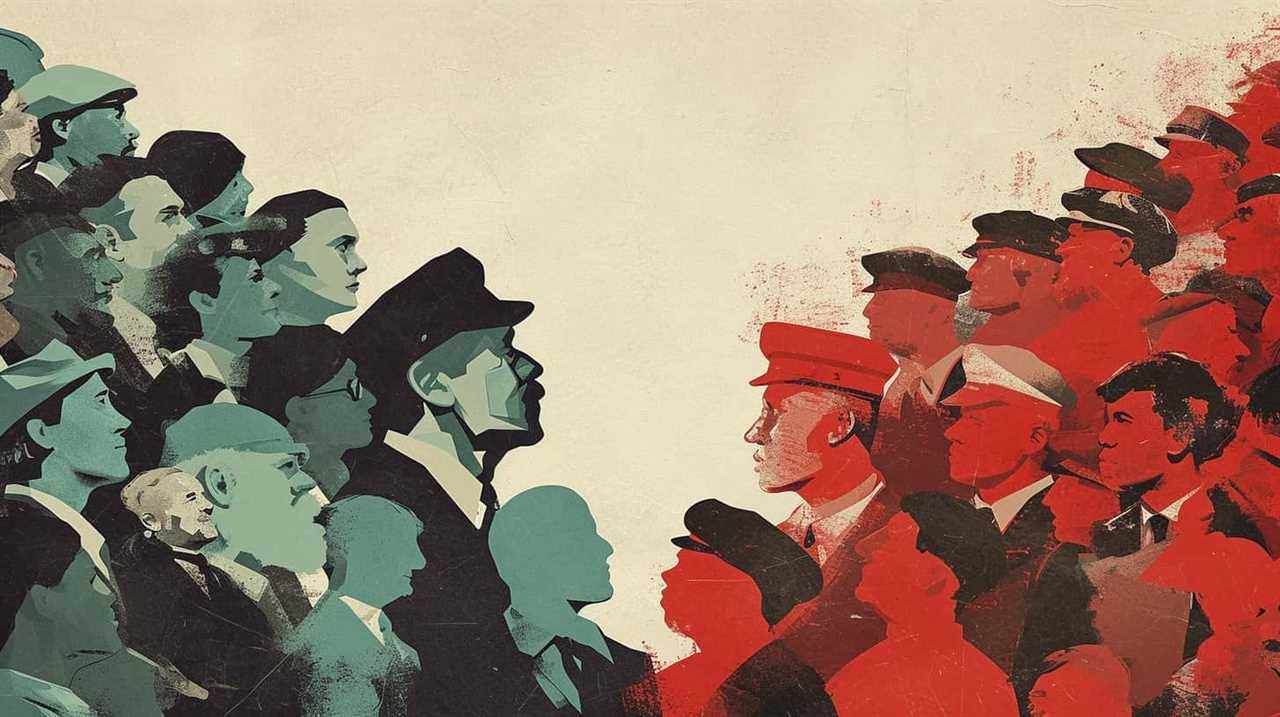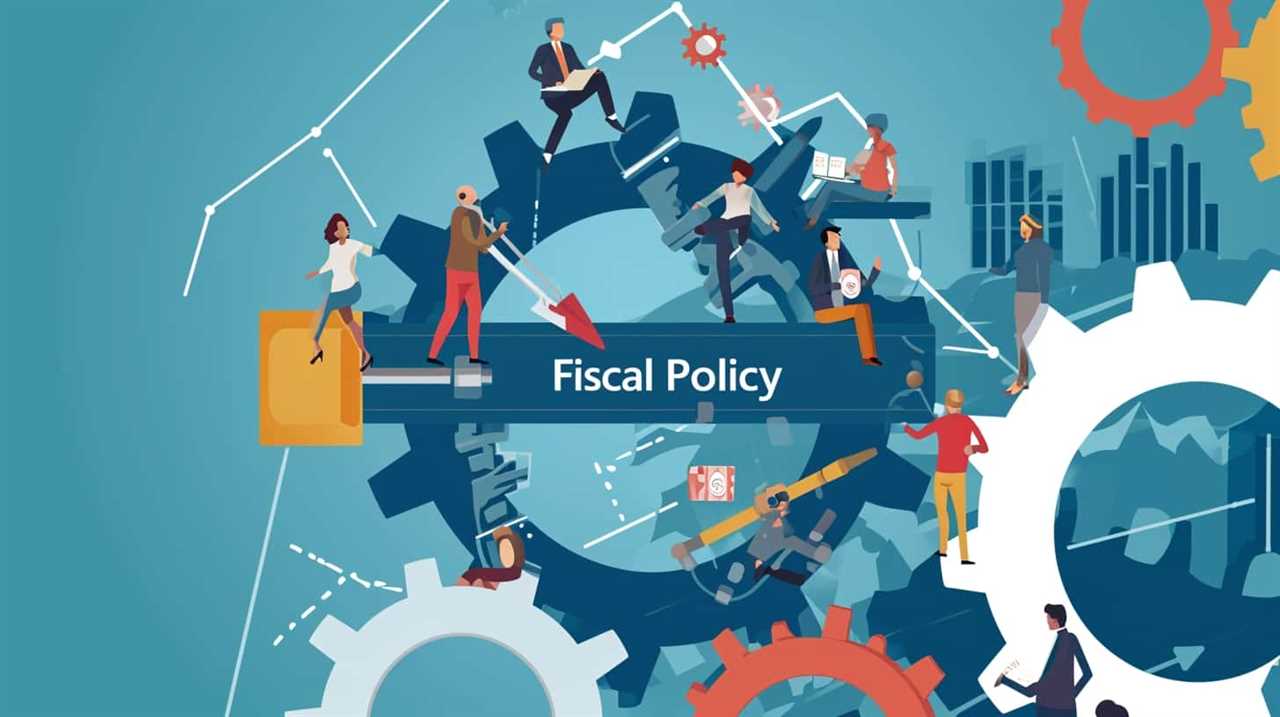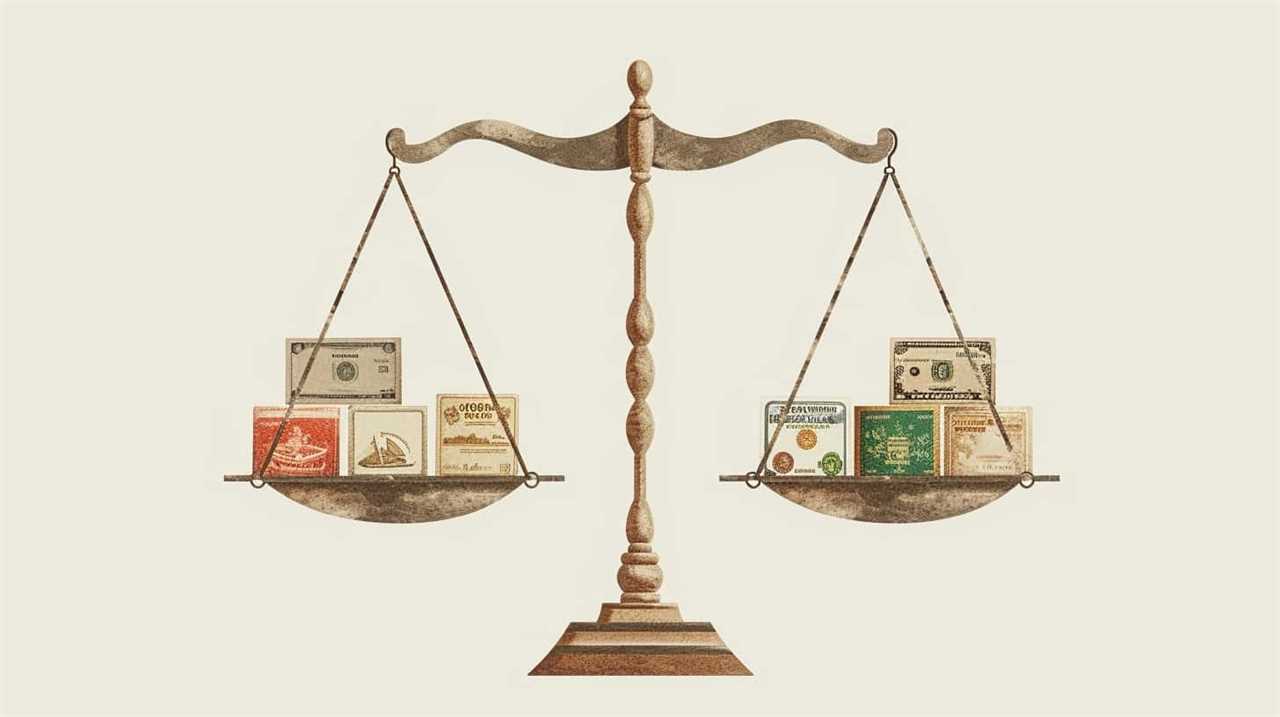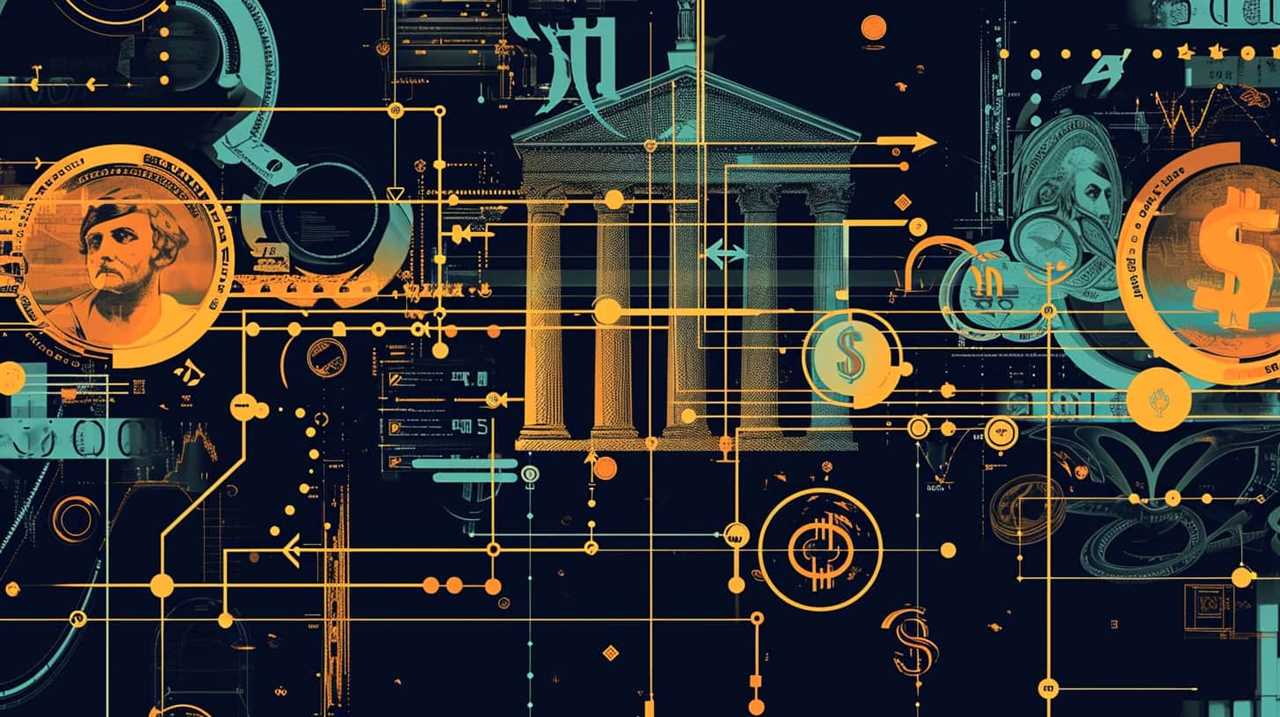Imagine a world where currency flows freely, like a river meandering through the land. Understanding the significance of money supply in relation to inflation is crucial in this context.
As a team of forward-thinking innovators, we have delved deep into the subject to bring you the six best insights on how money supply affects inflation.
From the famous Quantity Theory of Money to Friedman’s Monetary Theory, we explore the intricate relationship between money supply and prices.
We also examine the effects of increasing money supply on inflation and uncover strategies for controlling it through effective management.

Join us on this intellectual journey as we unravel the mysteries behind money supply’s role in inflation.
Key Takeaways
- Quantity Theory of Money and Friedman’s Monetary Theory suggest that an increase in money supply leads to higher prices and inflation.
- Changes in money supply can put upward pressure on prices and lead to inflation by increasing the amount of money available to spend.
- Factors such as money supply growth, velocity of money, central bank policies, expectations, global economic conditions, exchange rates, and trade policies influence money supply and inflation rates.
- Controlling money supply is essential for managing price stability, and central banks use tools like interest rate adjustments and open market operations to manage inflation.
Quantity Theory of Money
In understanding the role of money supply in inflation, we explore the concept of the Quantity Theory of Money. This theory suggests that the overall price level in an economy is directly proportional to the amount of money in circulation. According to the theory, an increase in the money supply leads to an increase in prices, while a decrease in the money supply results in a decrease in prices.
The causes of inflation can be complex and multifaceted, and the Quantity Theory of Money provides a useful framework for understanding one of these causes. When the money supply increases, individuals and businesses have more money to spend, which increases demand for goods and services. As demand increases, prices tend to rise. This can create an inflationary spiral, where rising prices cause wages to increase, and then higher wages lead to further increases in prices.
It is important to note that the Quantity Theory of Money isn’t the only theory that explains inflation. Other factors, such as changes in production costs or shifts in consumer preferences, can also contribute to inflationary pressures. However, understanding the role of money supply in inflation is crucial for policymakers and economists seeking to manage and control inflation effectively.

Transitioning to the subsequent section about Friedman’s monetary theory, we’ll now explore another influential theory that provides insights into the relationship between money supply and inflation.
Friedman’s Monetary Theory
How does Friedman’s Monetary Theory explain the relationship between money supply and inflation?
Friedman’s Monetary Theory, also known as the Monetarist Theory, posits that changes in the money supply directly influence the level of inflation in an economy. According to Friedman, inflation is primarily a monetary phenomenon. He argues that excessive growth in the money supply leads to an increase in aggregate demand, causing prices to rise.
In Friedman’s view, the role of banks is crucial in the money creation process. When banks lend money, they effectively increase the money supply. This expansionary effect on the money supply can lead to inflationary pressures in the economy. Friedman believed that central banks should control the growth rate of the money supply in order to maintain price stability.

Friedman’s Monetary Theory is data-driven and objective, emphasizing the importance of empirical evidence in understanding the relationship between money supply and inflation. His theory has been influential in shaping monetary policy, with many central banks adopting a more cautious approach to money supply growth.
In the subsequent section about the relationship between money supply and prices, we’ll explore how changes in the money supply affect the overall price level in an economy.
Relationship Between Money Supply and Prices
When examining the relationship between money supply and prices, two key points emerge.
First, an increase in the money supply tends to lead to inflation as it increases the amount of money available to spend, putting upward pressure on prices.

Second, the level of prices is influenced by the amount of money in circulation, with a larger money supply generally leading to higher price levels.
These points highlight the important role that money supply plays in shaping the overall price level and the potential impact it can have on inflation.
Money Supply and Inflation
Our research reveals a strong correlation between the money supply and inflation, indicating a direct relationship between the quantity of money in circulation and the overall level of prices. As we delve deeper into the relationship between money supply and inflation, we uncover several key insights:
- Money supply growth: An increase in the money supply can lead to inflationary pressure, as there’s more money available to be spent, increasing demand for goods and services.
- Velocity of money: The speed at which money circulates in the economy can also impact inflation. A higher velocity can result in increased spending and potentially higher prices.
- Central bank policies: The actions of central banks, such as increasing or decreasing interest rates or implementing quantitative easing, can influence the money supply and subsequently affect inflation.
- Expectations and psychology: Consumer and investor expectations about inflation can impact their behavior, leading to changes in spending and investment patterns that further affect price levels.
- Global factors: The money supply can be influenced by global economic conditions, exchange rates, and trade policies, which can in turn impact inflation rates.
Understanding the dynamics between money supply and inflation is crucial for policymakers and investors alike. In the next section, we’ll explore the relationship between price levels and money in more detail.

Price Levels and Money
As we transition into the subtopic of ‘Price Levels and Money’, let’s explore the relationship between money supply and prices in more detail.
Monetary policy plays a crucial role in determining the money supply, which in turn affects price levels. When the money supply increases, there’s a higher supply of money available in the economy. This excess liquidity can lead to an increase in demand for goods and services, causing prices to rise. This phenomenon is known as inflation.
If the increase in money supply isn’t balanced with the production of goods and services, it can result in an inflationary spiral, where prices continue to rise at an accelerating rate. Understanding the relationship between money supply and prices is essential for policymakers to make informed decisions regarding monetary policy.
Now, let’s delve into the subsequent section about ‘money supply and demand’.

Money Supply and Demand
We analyze the relationship between money supply and demand to understand its impact on inflation. The interaction between money supply and demand is a crucial component of monetary policy and has a direct effect on the overall economy.
Here are five key points to consider:
- Money supply impact: The level of money supply in an economy influences the purchasing power of individuals and businesses. An increase in money supply can lead to higher spending and inflation, while a decrease can have the opposite effect.
- Monetary policy: Central banks control the money supply through monetary policy tools such as interest rates and open market operations. By adjusting these variables, central banks aim to manage inflation and stabilize the economy.
- Demand for money: The demand for money is driven by factors such as economic activity, interest rates, and inflation expectations. People hold money to conduct transactions and as a store of value, and this demand plays a crucial role in shaping the overall money supply and inflation levels.
- Velocity of money: The velocity of money refers to the rate at which money changes hands in the economy. Higher velocity can lead to increased spending and inflation, while lower velocity can result in reduced economic activity.
- Economic indicators: Analyzing the relationship between money supply and demand requires examining various economic indicators, including GDP growth, inflation rates, and interest rates. These indicators provide valuable insights into the overall state of the economy and help policymakers make informed decisions.
Understanding the dynamics between money supply and demand is essential for grasping the complexities of inflation and formulating effective monetary policies. By considering these factors, policymakers can work towards achieving economic stability and innovation.
Inflationary Effects of Increasing Money Supply
The inflationary effects of increasing money supply can have a significant impact on the overall economy and individuals’ purchasing power. When the money supply is increased, it can lead to inflationary pressures, causing the general level of prices to rise. This occurs because as there’s more money in circulation, individuals have more purchasing power and are willing to spend more. As a result, demand for goods and services increases, which can lead to higher prices. Additionally, businesses may also raise their prices to maintain their profit margins in response to increased demand.

Monetary policy actions play a crucial role in determining the rate at which the money supply is increased. Central banks use various tools, such as open market operations, reserve requirements, and interest rates, to control the money supply. By adjusting these policy levers, central banks can influence the level of inflation in the economy.
Controlling inflation through money supply is an important aspect of monetary policy. Central banks aim to strike a balance between promoting economic growth and maintaining price stability.
In the next section, we’ll explore the strategies and tools used by central banks to manage inflation and ensure a stable and sustainable economic environment.
Controlling Inflation Through Money Supply
When it comes to controlling inflation, managing the money supply plays a crucial role.

The relationship between money supply and inflation is complex, as an increase in money supply can lead to inflationary pressures, while a decrease can help combat inflation.
Finding the right balance in money circulation is essential to ensure price stability and economic growth.
Money Supply Vs Inflation
Controlling inflation through the money supply involves carefully managing the relationship between money supply and inflation. The role of central banks is crucial in this process, as they have the power to influence the money supply through various tools such as open market operations, reserve requirements, and interest rates.
To effectively control inflation, central banks rely on economic indicators such as the Consumer Price Index (CPI), Producer Price Index (PPI), and Gross Domestic Product (GDP) growth rate. These indicators help central banks assess the current state of the economy and make informed decisions regarding the money supply.

By closely monitoring these indicators and adjusting the money supply accordingly, central banks can aim to maintain price stability and promote sustainable economic growth.
Transitioning into the next section, balancing money circulation requires a careful balance between stimulating economic activity and preventing excessive inflationary pressure.
Balancing Money Circulation
To maintain price stability and promote sustainable economic growth, we carefully balance money circulation to control inflation through the money supply.
Managing currency flow is essential in ensuring that the economy operates smoothly without experiencing excessive price increases. By regulating the amount of money in circulation, central banks can influence interest rates, which in turn affect borrowing costs and consumer spending.

Through open market operations, central banks buy or sell government securities to adjust the money supply. By increasing the money supply, the central bank encourages spending and investment, stimulating economic growth. Conversely, reducing the money supply helps to control inflation by curbing excessive spending.
Frequently Asked Questions
How Does the Quantity Theory of Money Explain the Relationship Between Money Supply and Inflation?
The quantity theory of money provides an explanation for the relationship between money supply and inflation. It suggests that an increase in the money supply leads to an increase in prices, as there is more money chasing the same amount of goods and services.
What Are Some Criticisms of Friedman’s Monetary Theory?
Some criticisms of Friedman’s monetary theory include its reliance on the quantity theory of money and its assumption of a stable velocity of money. Alternative theories of inflation, such as the cost-push and demand-pull theories, offer different perspectives on the relationship between money supply and inflation.
How Does the Relationship Between Money Supply and Prices Differ in the Short Run Versus the Long Run?
In the short run, changes in money supply can have a more immediate impact on prices, leading to potential inflation or deflation. However, in the long run, the relationship between money supply and prices is influenced by factors like economic growth and productivity.

How Does the Concept of Money Supply and Demand Affect Interest Rates?
Interest rate dynamics are influenced by the concept of money supply and demand. Changes in monetary policy impact interest rates, as the supply of money affects borrowing costs and inflation expectations, leading to shifts in interest rates.
Are There Any Other Factors Besides Money Supply That Can Contribute to Inflation?
There are various factors, such as fiscal policy, consumer spending, and global events, that can contribute to inflation. These factors interact with money supply to create inflationary pressures, impacting supply and demand dynamics and economic growth.
How Does Friedman’s Money Supply Control Theory Impact Inflation?
Friedman’s theory offers the best insights into controlling money supply to manage inflation. By adjusting the amount of money in circulation, central banks can influence consumer spending and ultimately inflation rates. This theory has had a significant impact on modern monetary policy, guiding decision-making processes to achieve stable economic conditions.
Conclusion
Well, after diving into the world of money supply and its role in inflation, we can confidently say that it’s all just a big game of monopoly.
The Quantity Theory of Money, Friedman’s Monetary Theory, and all the other fancy theories may sound impressive, but at the end of the day, it’s just a bunch of numbers and equations trying to explain why prices go up.

So next time you’re hit with a hefty price tag, just remember, it’s all part of the game.
Lauren’s talent in writing is matched by her passion for storytelling. Her love for books and deep understanding of culture and entertainment add a distinct flavor to her work. As our media and press contact, Lauren skillfully bridges the gap between afterQuotes and the broader media landscape, bringing our message to a wider audience.










